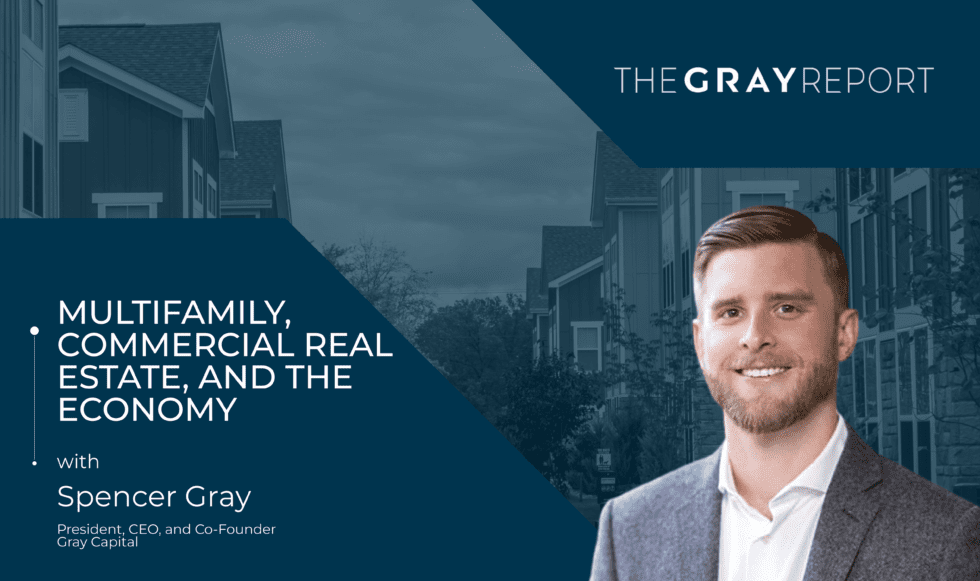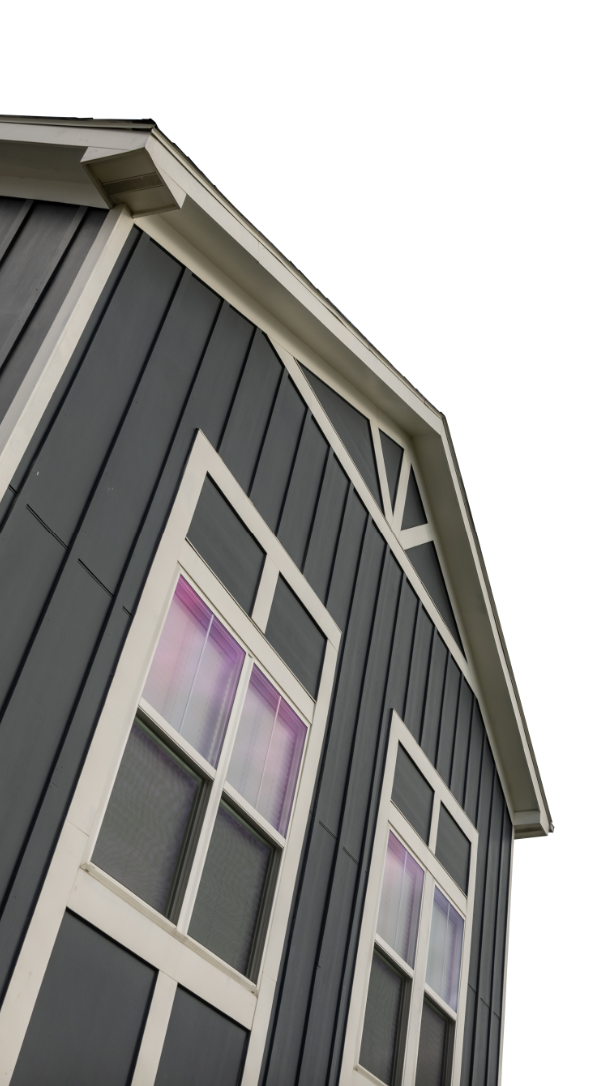
Notes: The Gray Report Newsletter, June 9 2022
Every week, The Gray Report publishes a video and podcast that covers the latest news, research, and reports from the multifamily industry, commercial real estate markets, and the economy. Below are our links and notes associated with our weekly video, podcast, and newsletter. These notes may be rougher and more conversational compared to other blog posts and publications from Gray Capital, but they provide additional insight into our ongoing discussion of the most important news and research for apartment investors.
Apartment List: The Apartment List Vacancy Index
- A new monthly report from Apartment List covers vacancies, absorption, occupancy—the demand for apartments as measured by the percentage of available units that are either occupied (absorption) or not occupied (vacancy).
- I really like this Apartment List report for its dedicated topic, (usually vacancy is just a part of a more general multifamily report) and the clarity of its data.
- We cover a lot of these monthly or quarterly reports on the apartment market, and we try to note the relevant information about different sources and different reports. They’re pulling from slightly different data sets, so different sources are going to have different numbers.
- Apartment List has a nice methodology section to it, and I appreciate how forthright it is about its role:
- Apartment List has a service that multifamily professionals can pay for that is aimed at reducing Vacancy.
- Here’s where I like this openness from Apartment List about what they are selling and where they are coming from:
- Because Apartment List is so good, they actually have to adjust their vacancy numbers in order to get an accurate measurement for the market as a whole.
- Apartment List’s methodology section in this report is way more interesting than I thought it would be, and even when there’s an indirect sales pitch within that methodology section, I still appreciate it.
- Some reports don’t have a methodology section, but they do cite their sources with some fine print at the bottom of the page.
- Some reports don’t have a methodology section and don’t really cite their sources for their numbers. When I read those reports, I think “I’ll trust these numbers, but thank goodness for them that I’m such a trusting person.”
- Now, yes, you should read this report in context with your own experience and alongside other reports that measure apartment demand, but I wouldn’t dismiss it. Laying out their process and their role here ups Apartment List’s credibility for me.
- So with that preamble out of the way, here’s Apartment List’s view of vacancy for the past five years.
- In 2017, Vacancies were bouncing around the mid-to-upper 6% range.
- After the pandemic started, vacancies peaked in July 2020 at 7.25%.
- Vacancies went ever downward after that, bottoming out at 4.07% in October of last year.
- Since last October, vacancies have increased to 4.95%, but the rate of this increase is flattening out.
- Looking at the pre-pandemic trends (and how they were bouncing around) it looks like there is a regular, seasonal bounce around April and May where vacancies are high, and then in around November and December vacancies fall.
- I wonder if the new average, instead of bouncing around the upper 6% range, will now be bouncing around the lower 5% range.
Yardi Matrix: National Multifamily Report, May 2022
- Rent growth was at 13.9% year over year, a slight deceleration that is due more to 2021 base effects.
- Check it out:
- The month-over-month rent growth was higher for May than it was for April.
- The year-over-year went down.
- That’s because we’re now getting into the heart of the rent increases from last year. Those increases were so big that we can have increasing month-over-month numbers but still have lower year-over-year numbers.
- When you are comparing yourself to the boiling hot 2021 rent growth, yeah it might look bad, but it’s not so bad AT ALL. This is a case where okay, looking at a bigger picture can kindof blind you to some worthwhile insights about where the market is moving today
- “Rents continue to defy gravity,” they say in this report, which is, I think a pretty forceful statement on current rent growth. It’s not a bold statement, not reckless or provocative. They’re seeing quite high rent growth, and they’re calling it: It’s quite high.
- How high is it??? Well, at the beginning of the year, Yardi Matrix predicted 4.8% rent growth. Well, we’re at about 4.7% rent growth right now. I checked some previous Yardi Matrix reports to get that number for the year thus far, and they keep talking about the inevitable cooldown. I know, I know, inevitably, everything is going to cool down, but it pays to know if that inevitability is going to happen now or 6 months from now.
- We are not even halfway through the year, and Yardi Matrix has recorded rent growth at essentially double the rate that they anticipated in January. We may not have rent growth at exactly double what Yardi Matrix predicts by the end of the year, but we’re totally blowing past it, no question.
- This report also follows a similar line of logic that we outlined several weeks ago:
- “Signs of the inevitable cooling may well come from the weakening occupancy rates in some high-growth metros.”
- The markets like Phoenix, Boise, Miami, Orlando, Austin, Tampa, and other SUNny places in that BELT region across the Southern United States. They might be more vulnerable to changes in apartment demand.
- They may not! Every market has it’s own demand drivers, which Yardi Matrix says explicitly.
- But, just a couple of years ago, we saw how the crisis hit high-rent places like San Francisco and San Jose particularly hard. If an expensive high-growth metro is still seeing job growth, then maybe it won’t be so vulnerable, but if job growth in a high-growth apartment market is the same as job growth in a less-rapidly-growing apartment market, I think that you’ll see the one with higher rents get hit harder by reduced demand.
Fannie Mae: National Housing Survey
- It’s not a great time to buy a home. Only 17% think that the timing is right.
- Looking at their numbers, it hasn’t been a good time to buy a home since March of 2021, when 53% said it was a good time to buy a home, and 40% said it was a bad time to buy a home, and I guess 7% were on the fence.
- Looking at a longer view of Fannie Mae’s Home Purchaser Sentiment Index makes it even more dramatic.
- We kindof entering, not exactly uncharted territory, but it is unusual. Home buyer is at 68.2% right now, and the last time it was this low was ten years ago during the long crawl out of the great financial crisis.
- Yes, it was briefly down to 67.5% at the start of the pandemic, but what’s a good data set without some outliers?
- A whole group of factors are making home buyers less thrilled about buying a home, but man, even though they don’t think now is a good time to buy, they really don’t think next year will be a good time to buy either!
- In the next year:
- More people think their income will be significantly higher than lower, 26% to 16%
- More people think that mortgage rates will increase rather than decrease, 70% to 4%
- More people think that home prices will go up rather than down, 47% to 23%.
- More people expect to keep their job rather than lose it, 81% to 16%
- Interesting breakdown of the factors here and the historical context of our current home buyer pessimism.
- With people so low, so bummed out about buying homes, with a pessimism unseen for nearly a decade (outside that outlier I previously mentioned), it sure seems like home prices could go down.
- The lack of new housing supply and the lack of interest in putting homes up for sale are on one side creating more scarcity that keeps home prices up.
- The other side of this are the multiple factors that are dissuading people from buying a new home.
- I think the real factor here is the increase in mortgage rates that kindof snapped people awake. The fact that this increase in mortgage rates made SUCH a huge dent in home buyer confidence could imply that prices were elevated even before the mortgage rate increase, and they’re set to normalize.
- Going from .5% Fed funds rate to 1.0% is a 100% increase. Going from 1.0 to 1.5 is a 50% increase. Is there a case to be made that each subsequent interest rate increase will have a smaller effect on demand, or is there going to be a snowball effect?
RealPage: US Apartment Market Showing No Sign of Slowing Down (Yet)
- Not just new leases: Rent growth for renewals is increasing at a very robust rate
- Renters are paying 19.5% for new move-in leases compared to the previous leases.
- For renewals, Class A and B renters are paying 12% more than their old leases, but Class C renters are only paying 7.9% more, which is below the 8.3% inflation rate.
- Renter incomes have also increased by 8% for market rate apartments.
- As for demand: “Prospective leasing traffic – an early indicator of demand – appears to be leveling off from the all-time highs set last year. Of course, leveling isn’t the same as cooling. To that point, leasing traffic in May 2022 was still higher than any other May on record prior to 2021.”
- Leveling off is not the same as cooling off. I agree with that.
NAR: May 2022 Commercial Market Insights
Industrial rent growth (11.8%) is a couple of percentage points above multifamily (9.7%) here.
Either way, the dip in rent growth, (rent is still increasing but not as quickly as before) is not the focus in this report. Notably, NAR mentions growing occupancy numbers for multifamily and shrinking occupancy for industrial, so there’s still some open competition between industrial and multifamily properties for the top performing property type.
When it comes to sales volumes, multifamily’s $265.2B is the clear leader at more than double the number for second place (industrial at $119.6B).
There was less investment in Q2 of this year as a whole, and there are some disappointing numbers for REITs.
Aside from hotel REITs (up 9.1%) and timber REITs (up 3.5%), all other REITs are down for the year.
Apartments REITs are down 8% and Industrial REITs are down 8.4%.
Here’s a quote where you can almost picture the kind of head scratching that the writer is doing:
“Investors appear to be expecting more personal and business travel as COVID-19 cases have led to fewer deaths even as infections have surged. Investors shied away even from REITS invested in assets that have strong fundamentals like apartments, single-family homes, infrastructure, and data centers. Rent growths for multifamily and industrial assets are outpacing inflation, making these assets a good hedge against inflation.”
Despite the good fundamentals, despite the fact that business travel hasn’t taken off, investors in REITs have driven the market in another direction.
This situation is one of the big drawbacks to investing in a REIT. You could have a 100% perfect view of the fundamentals of a given property type, but if more people are wrong, they could win. Even if events make those fundamentals even better than before making you even right-er than before, the collective wrong-ness of other people can still make you lose.
